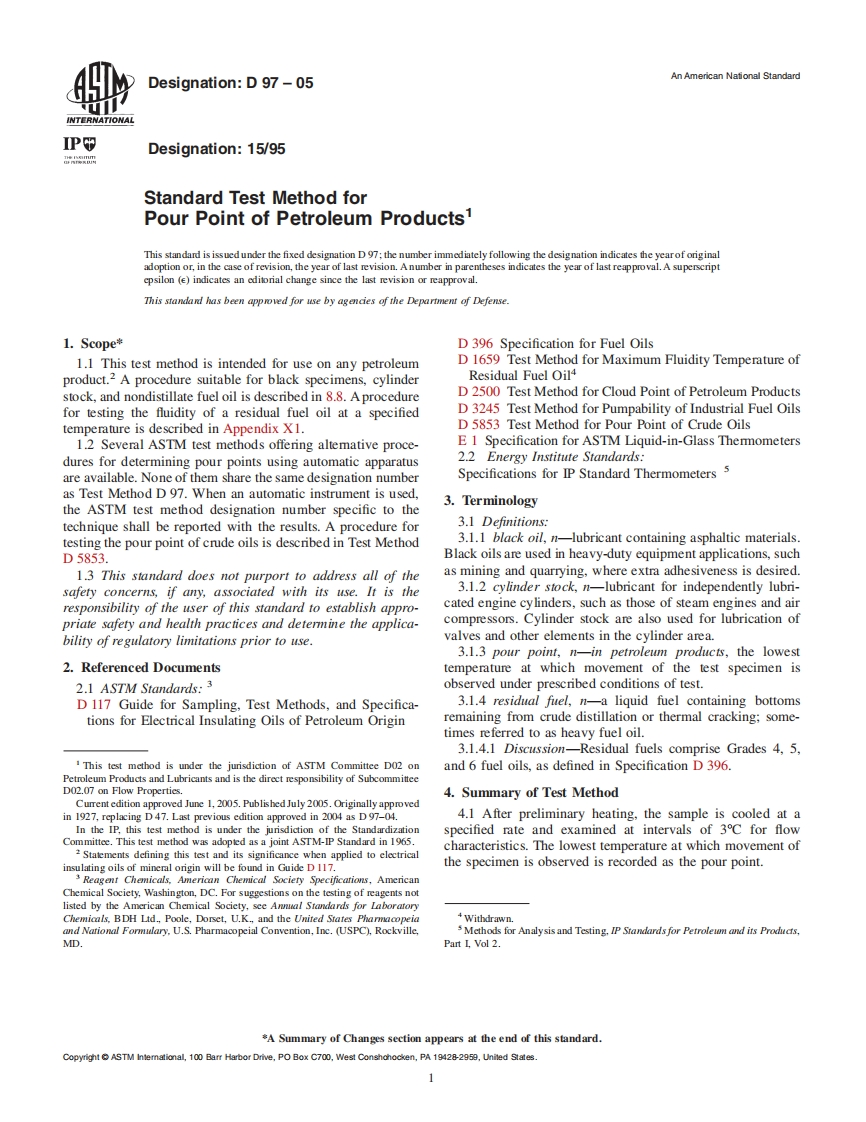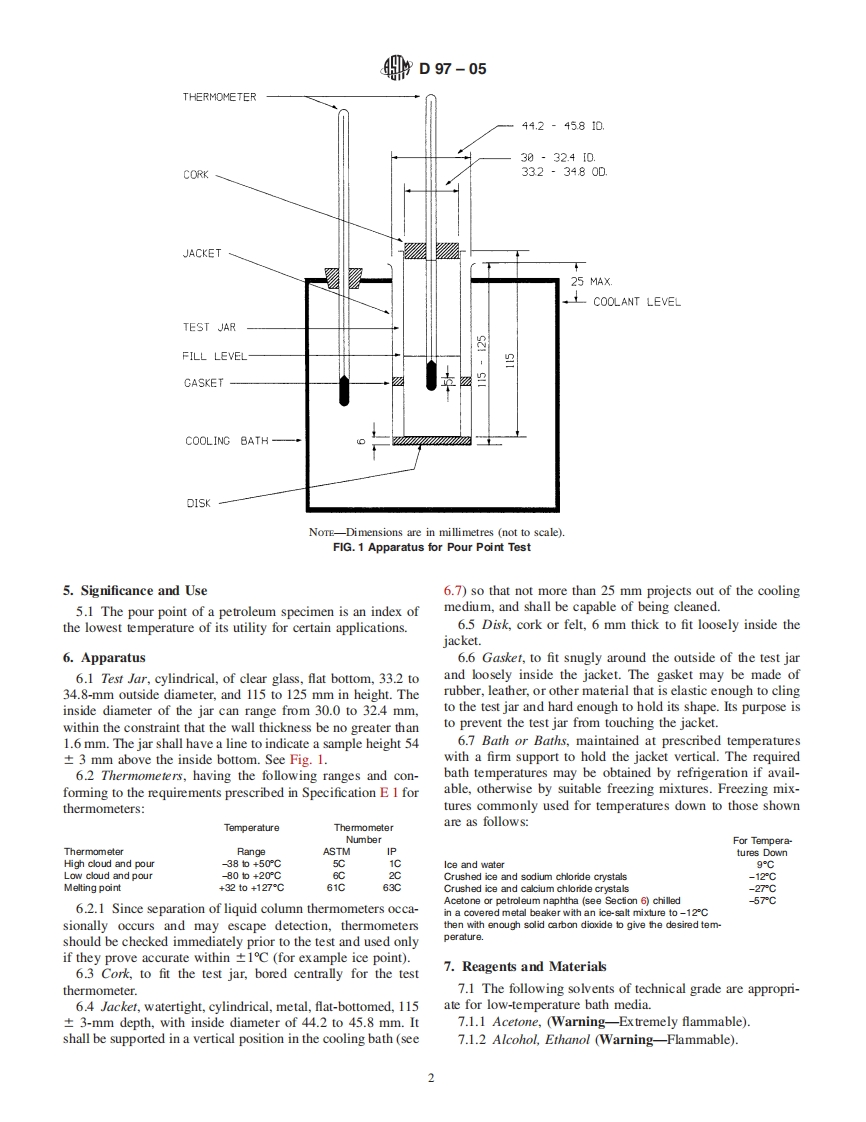

第1页 / 共9页

第2页 / 共9页
试读已结束,还剩7页,您可下载完整版后进行离线阅读
THE END
Designation:D 97-05An American National StandardINTERNATIONALIPDesignation:15/95Standard Test Method forPour Point of Petroleum Products1This standard is issued under the fixed designation D97:the number immediately following the designation indicates the yearof originaladoption or,in the case of revision,the year of last revision.Anumber in parentheses indicates the year of last reapproval.A superscriptepsilon (e)indicates an editorial change since the last revision or reapproval.This standard has been approved for use by agencies of the Department of Defense1.Scope*D 396 Specification for Fuel Oils1.1 This test method is intended for use on any petroleumD 1659 Test Method for Maximum Fluidity Temperature ofproduct.2A procedure suitable for black specimens,cylinderResidual Fuel Oil4stock,and nondistillate fuel oil is described in 8.8.A procedureD 2500 Test Method for Cloud Point of Petroleum Productsfor testing the fluidity of a residual fuel oil at a specifiedD 3245 Test Method for Pumpability of Industrial Fuel Oilstemperature is described in Appendix X1.D 5853 Test Method for Pour Point of Crude Oils1.2 Several ASTM test methods offering altemative proce-E 1 Specification for ASTM Liquid-in-Glass Therometersdures for determining pour points using automatic apparatus2.2 Energy Institute Standards:are available.None of them share the same designation numberSpecifications for IP Standard Thermometers 5as Test Method D 97.When an automatic instrument is used,the ASTM test method designation number specific to the3.Terminologytechnique shall be reported with the results.A procedure for3.1 Definitions:testing the pour point of crude oils is described in Test Method3.1.1 black oil,n-lubricant containing asphaltic materials.D5853.Black oils are used in heavy-duty equipment applications,such1.3 This standard does not purport to address all of theas mining and quarrying,where extra adhesiveness is desired.safety concerns,if any,associated with its use.It is the3.1.2 cylinder stock,n-lubricant for independently lubri-responsibility of the user of this standard to establish appro-cated engine cylinders,such as those of steam engines and airpriate safety and health practices and determine the applica-compressors.Cylinder stock are also used for lubrication ofbility of regulatory limitations prior to use.valves and other elements in the cylinder area.3.1.3 pour point,n-in petroleum products,the lowest2.Referenced Documentstemperature at which movement of the test specimen is2.1 ASTM Standards:3observed under prescribed conditions of test.D 117 Guide for Sampling,Test Methods,and Specifica-3.1.4 residual fuel.n-a liquid fuel containing bottomstions for Electrical Insulating Oils of Petroleum Originremaining from crude distillation or thermal cracking;some-times referred to as heavy fuel oil.3.1.4.1 Discussion-Residual fuels comprise Grades 4,5,This test method is under the jurisdiction of ASTM Committee D02 onand 6 fuel oils,as defined in Specification D 39



请登录后查看评论内容